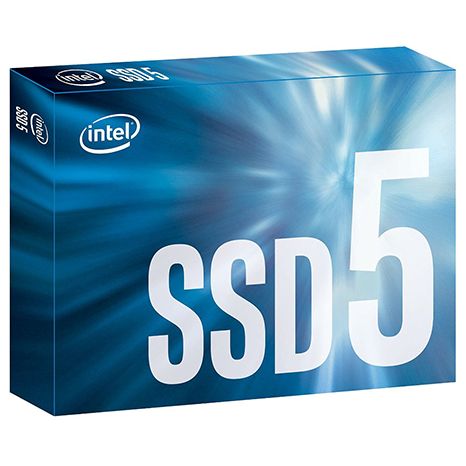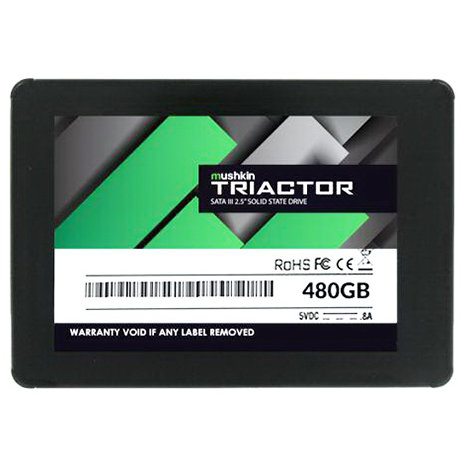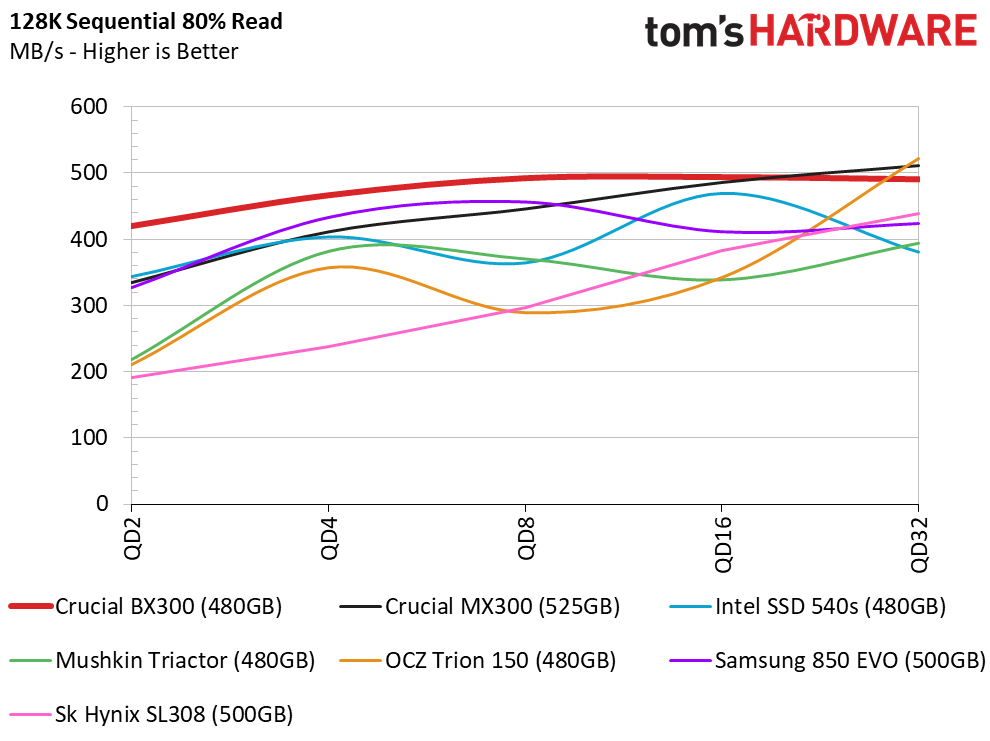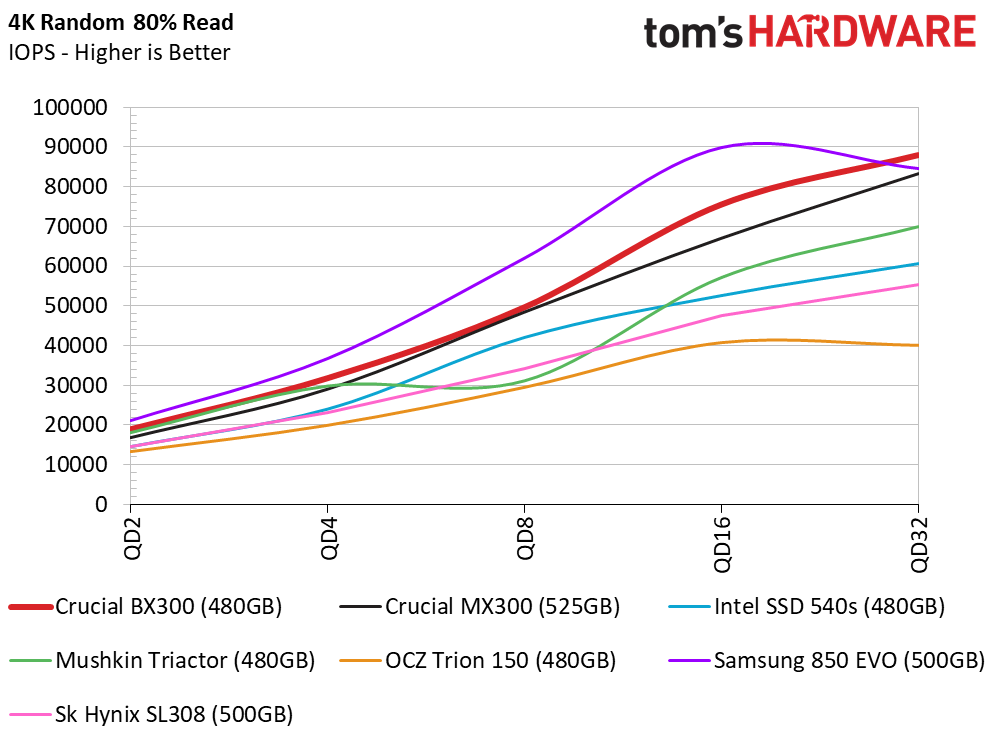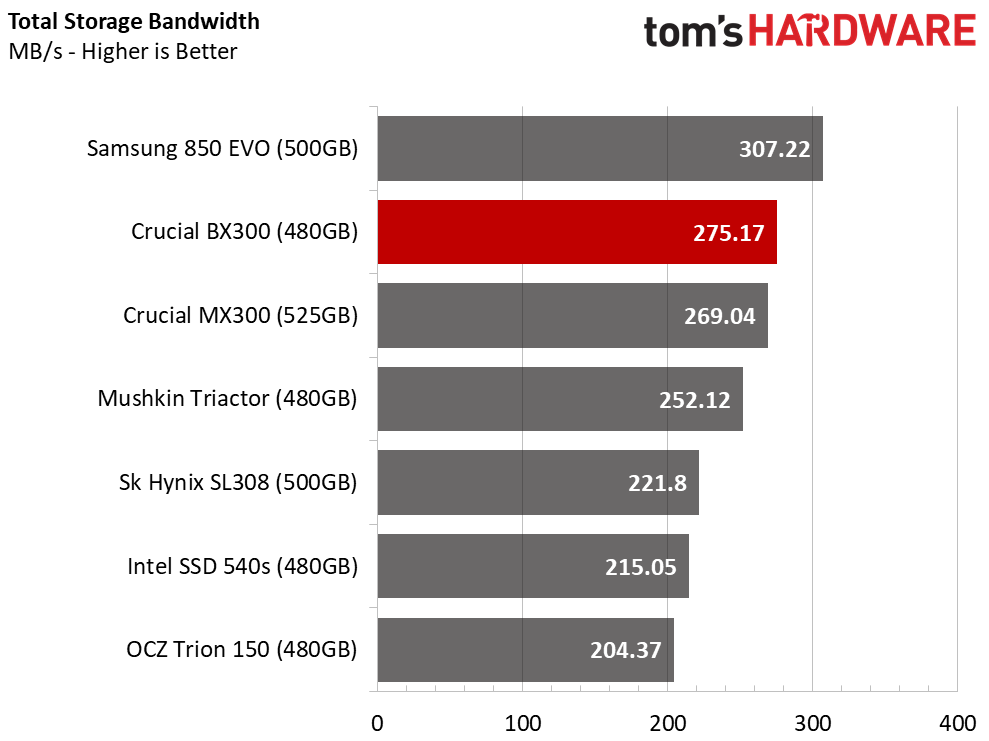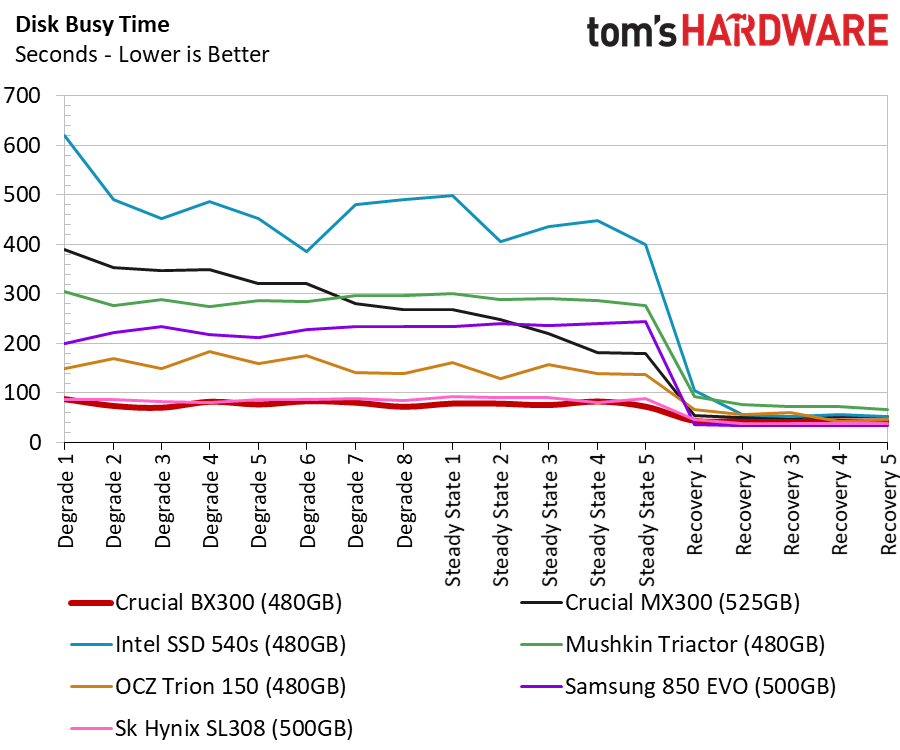Crucial BX300 SSD Review
Why you can trust Tom's Hardware
512GB Class SSD Performance
Comparison Products
We have the two high-capacity BX300 drives in the lab for testing. We begin with the larger 480GB drive that competes in the 512GB-class. This is the most relevant SSD for most of our readers due to the enormous size of modern games and other applications.
As usual, the Samsung 850 EVO is the dominant product in this category, and it features the same $149.99 price as the BX300 480GB. The Sk Hynix SL308 is a close second. We don't have the Western Digital Blue 3D or SanDisk Ultra 3D in this capacity yet, but we expect to test those products soon.
The other comparison products, including the Crucial MX300, were never very competitive in the market. Some SDDs cost more than the industry-standard 850 EVO, while others deliver less performance. In many cases, both are true.
Sequential Read Performance
To read about our storage tests in-depth, please check out How We Test HDDs And SSDs. We cover four-corner testing on page six of our How We Test guide.

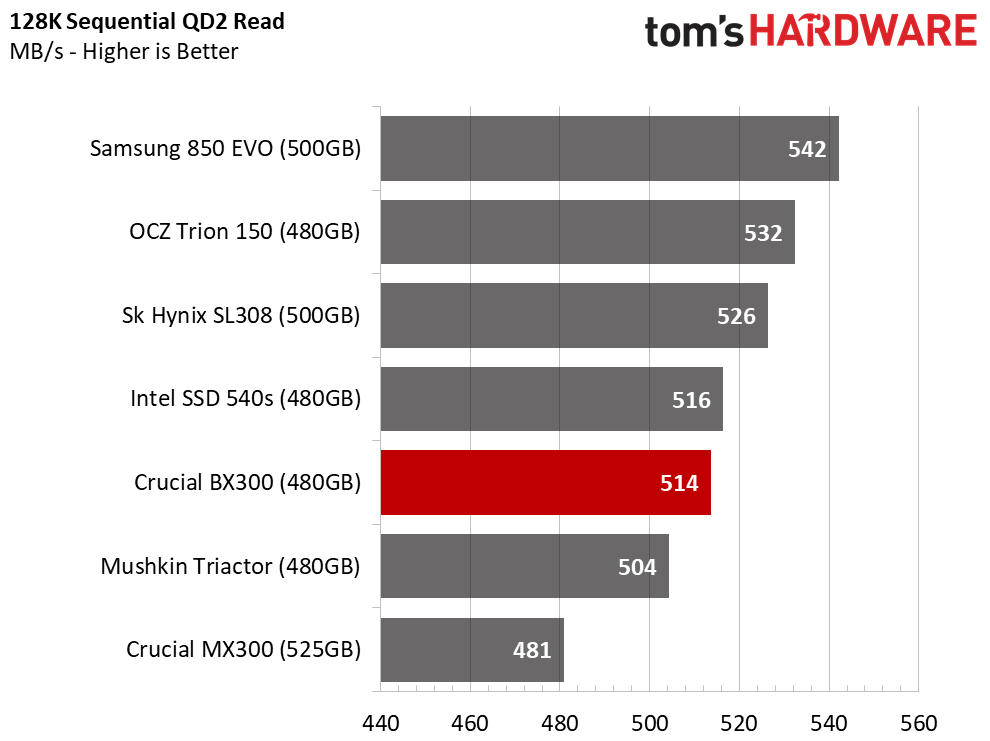
Most of the products deliver over 500 MB/s of sequential read performance. The MX300 is the only SSD we've tested over the last five years that failed to meet this goal at a queue depth (QD) of 2. Crucial didn't make the same mistake with the BX300. The drive rockets up to 514 MB/s at QD2 and joins the other products as we increase the workload.
Sequential Write Performance

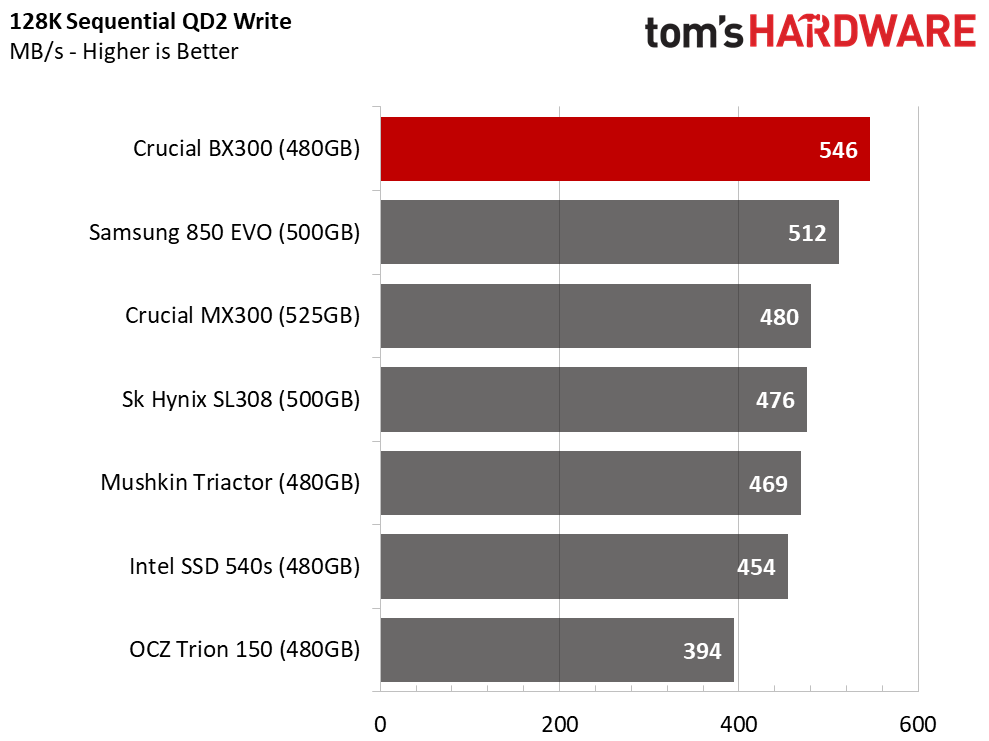
The BX300 performs exceptionally well in the sequential write test. The drive leads all others, including the 850 EVO 500GB that now looks vulnerable to products shipping with new 3D NAND technology.
Random Read Performance



The BX300 480GB doesn't hit the 10,000 IOPS at QD1 that we like to see with new products. The drive isn't far behind though, and it scales well as we intensify the workload.
Get Tom's Hardware's best news and in-depth reviews, straight to your inbox.
Random Write Performance



The random write test reveals nearly identical performance between the BX300 and the 850 EVO. The two SSDs trade positions on each step up the scale.
80% Mixed Sequential Workload
We describe our mixed workload testing in detail here and describe our steady state tests here.
The four-corner performance results are important, but we prefer to see high performance in mixed workloads. Your computer constantly reads and writes a lot of data in the background, even without user interaction, so mixed workload performance is critical. Your SSD also initiates background processes to clean up the NAND and ensure performance remains consistent.
In this test, we use an 80/20 mix of 128KB sequential write data. The BX300 dominates the performance chart until we reach the top of the QD range.
80% Mixed Random Workload
We use the same mix with random 4KB blocks to test mixed random performance. The BX300 performs well, but it falls a little short of the 850 EVO.
Sequential Steady-State
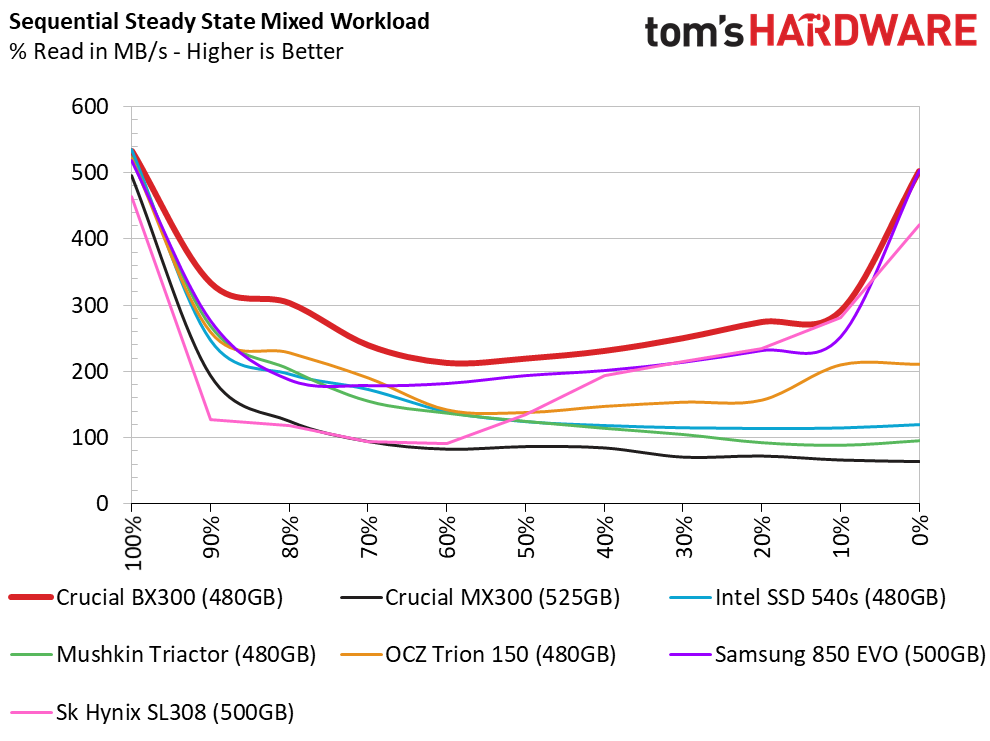

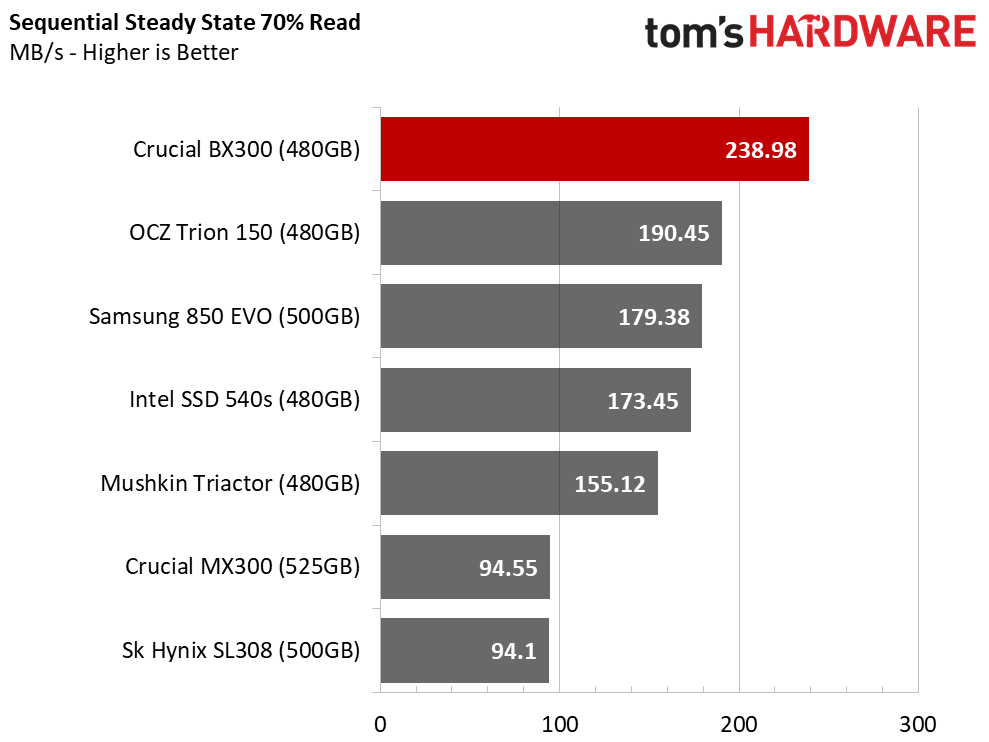
We wish our WD Blue 3D 500GB drive were here to compare to the BX300. The Blue 3D 1TB version with the latest version of SanDisk's BiCS NAND delivered very good performance in this test.
We test the drives in a steady state, which is a reduced performance state due to heavy activity. The results show the BX300 may be a good fit for video editing. We'll examine steady state performance more in depth later in the review.
Random Steady-State
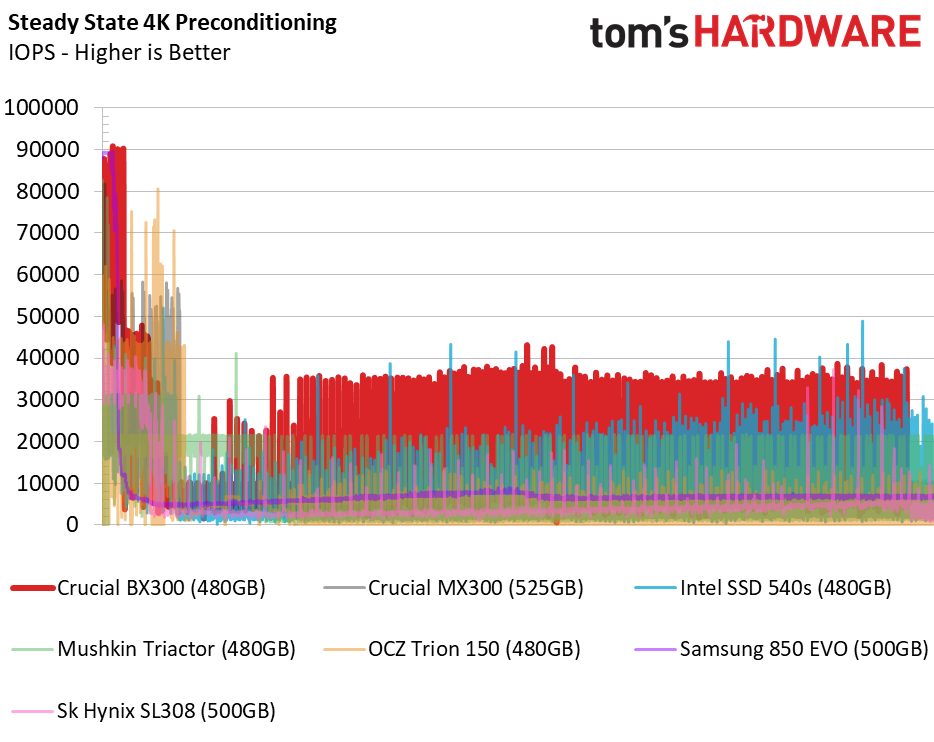
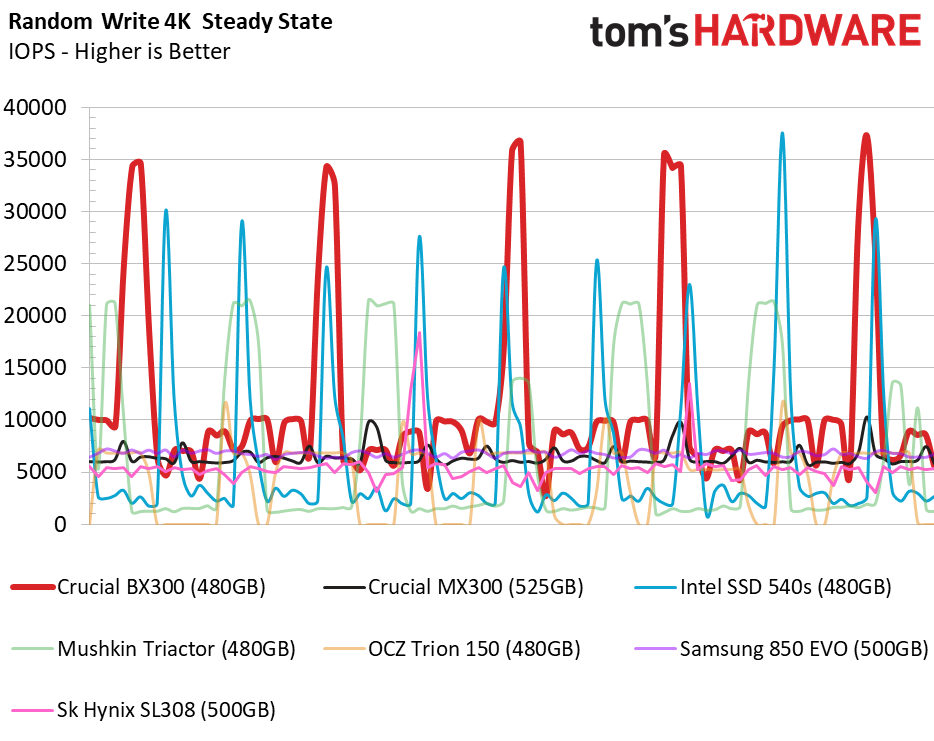
In this test, we fill the usable capacity with random 4KB data and then continue to write to the drives. The Crucial BX300 480GB has a high average score, but it isn't consistent.
PCMark 8 Real-World Software Performance
For details on our real-world software performance testing, please click here.
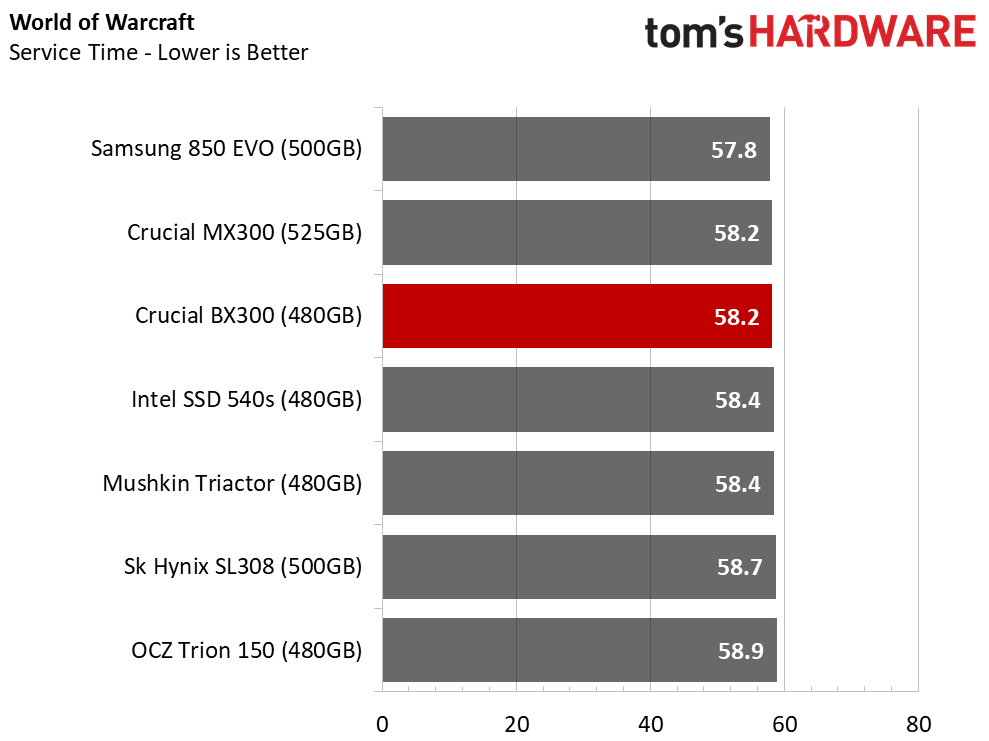
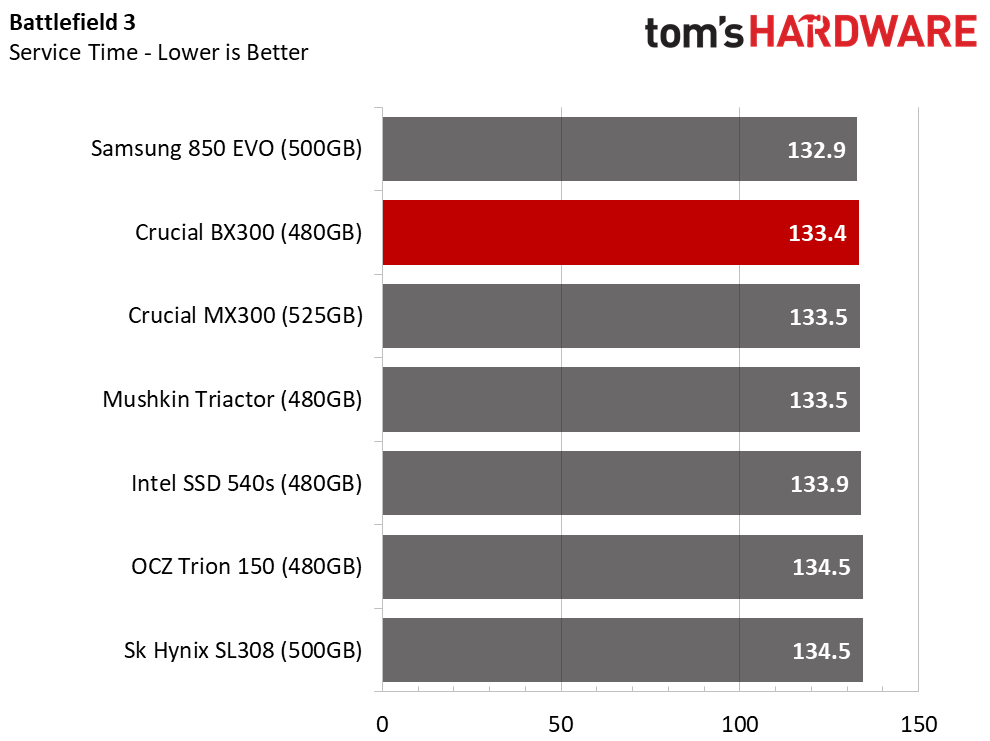
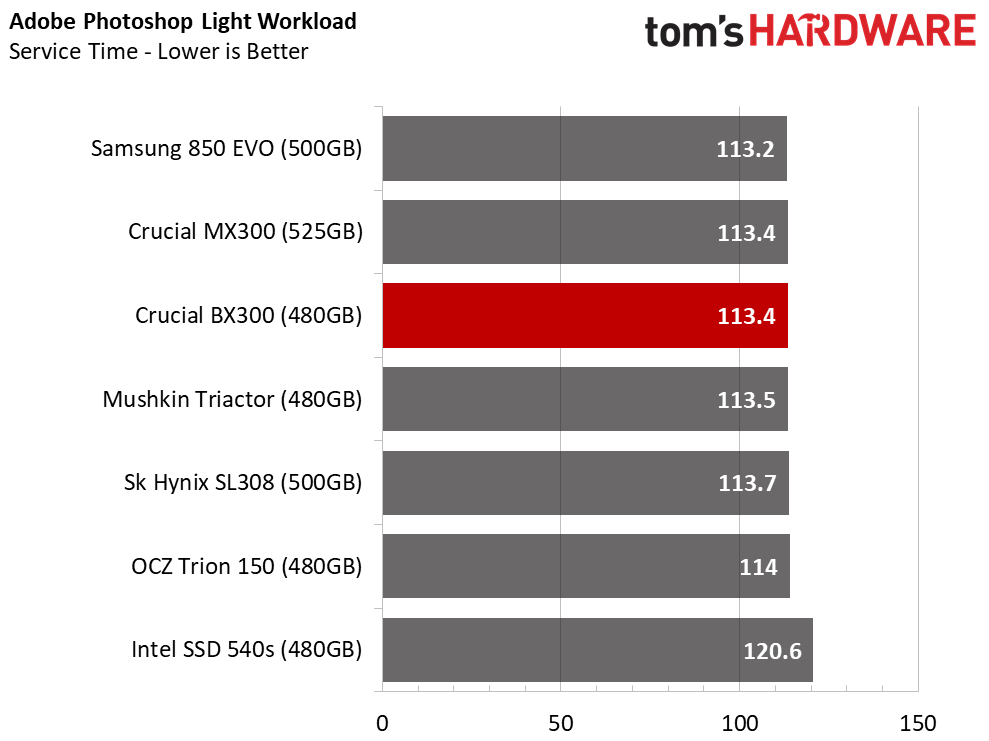
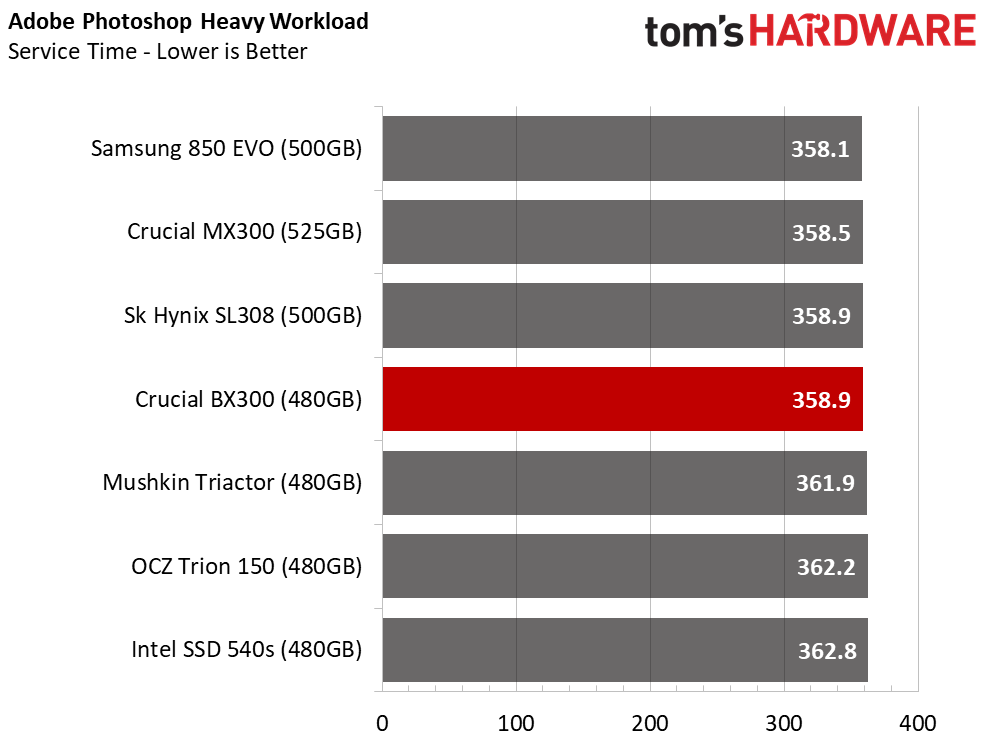

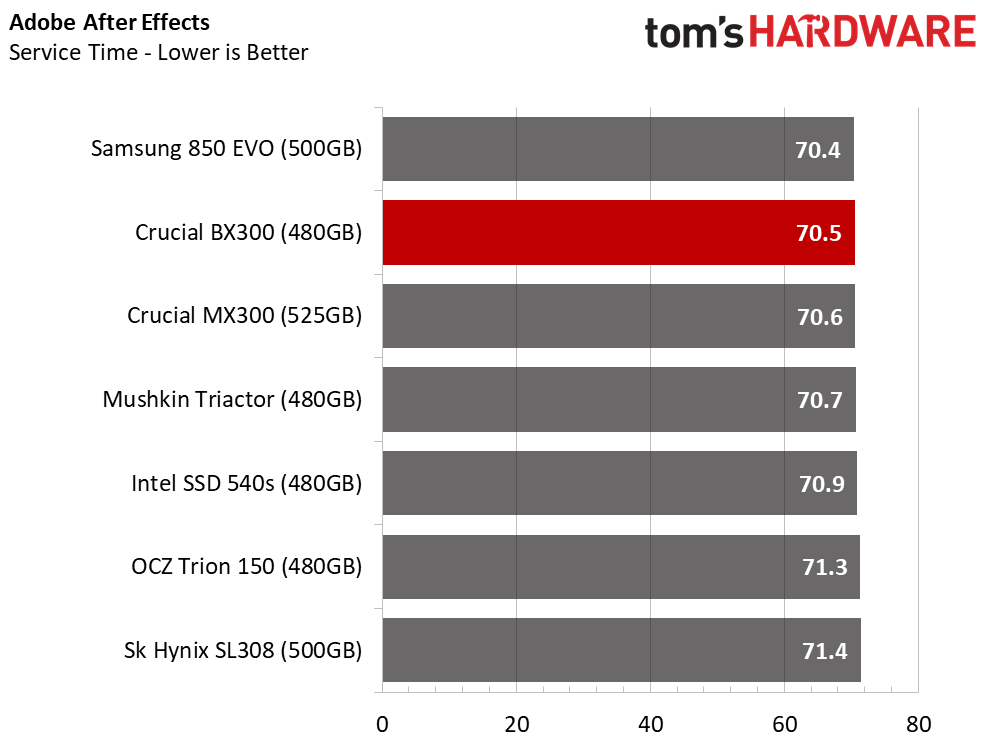
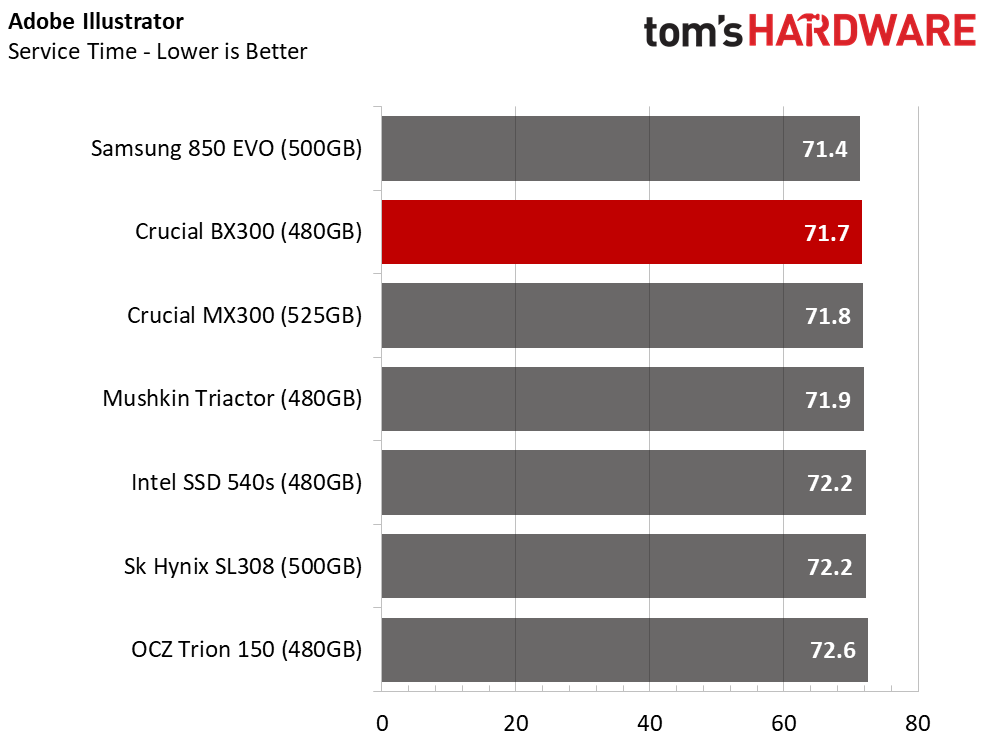

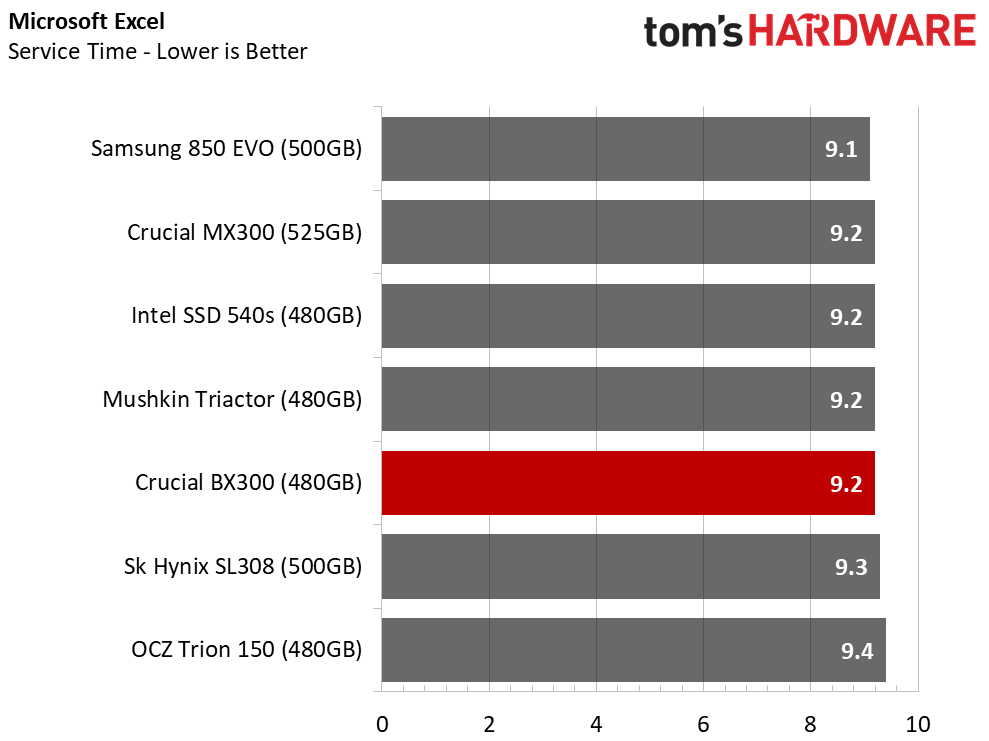
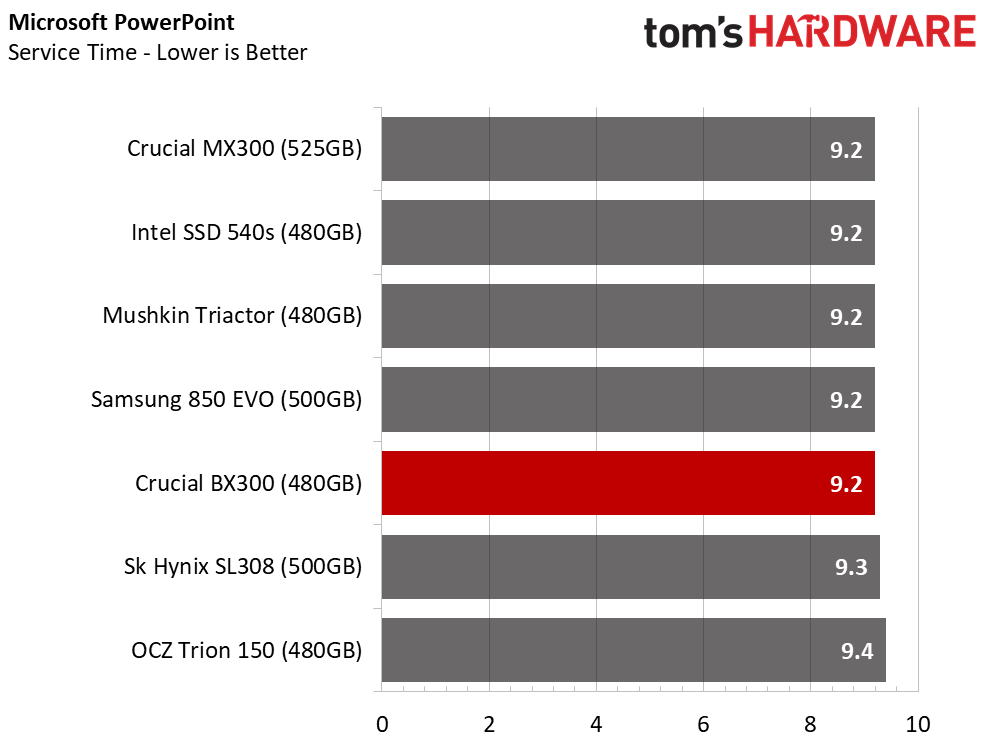
The BX300 480GB doesn't overtake the 850 EVO, but it is very close in most of the timed tests. It would be difficult for users to tell the difference between the two during a normal workload.
Application Storage Bandwidth
The BX300 splits the gap between Crucial's MX300 525GB mainstream SSD and the Samsung 850 EVO 500GB. That's the magic of advanced cache. Now we just need Crucial to work some magic on pricing and endurance.
PCMark 8 Advanced Workload Performance
To learn how we test advanced workload performance, please click here.
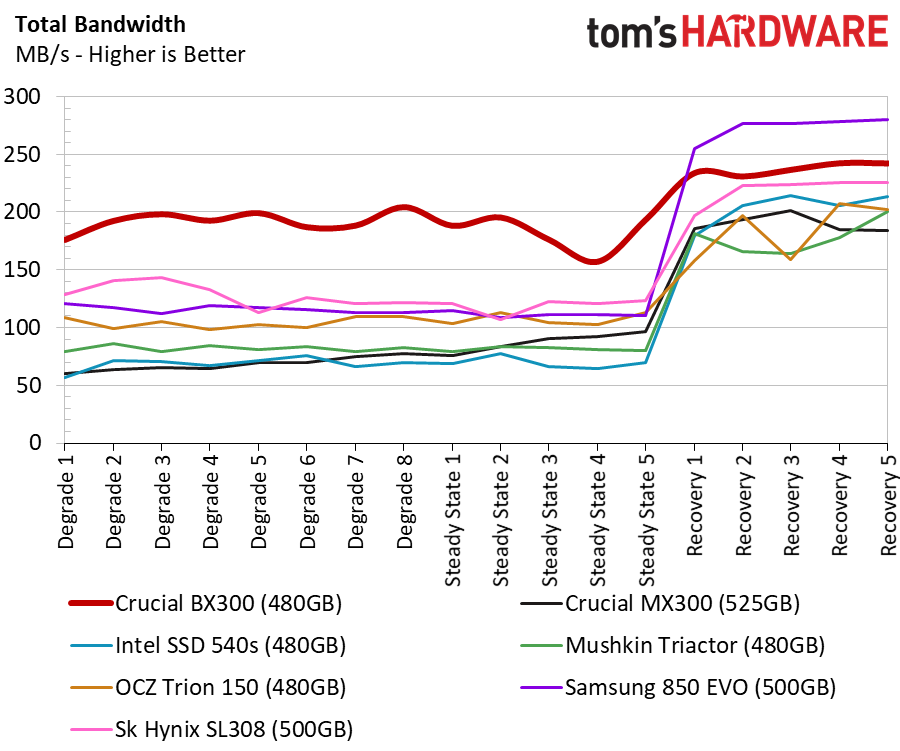
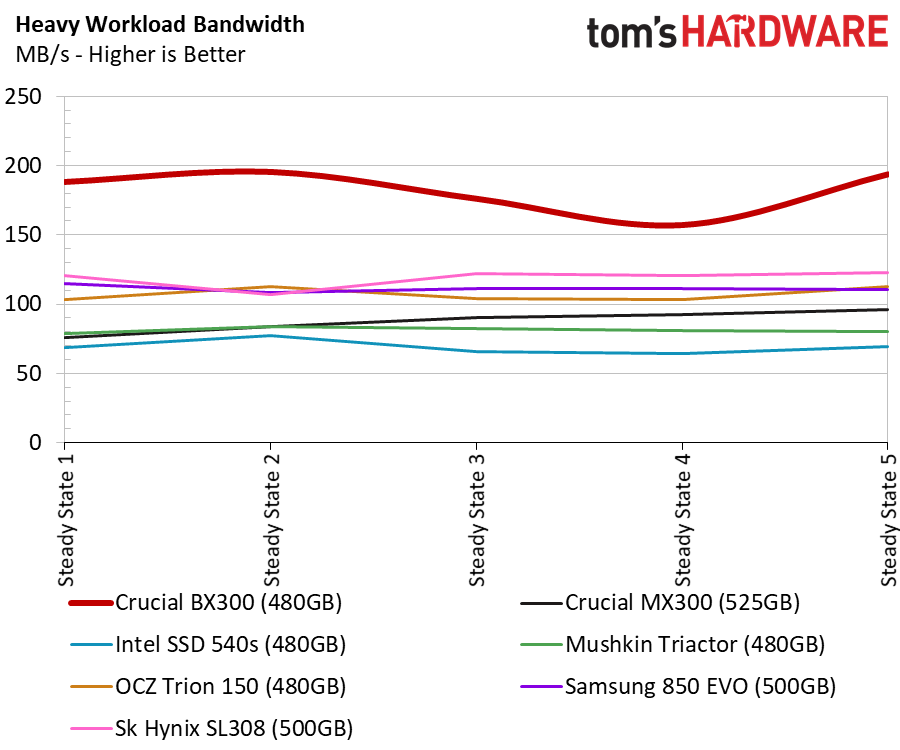
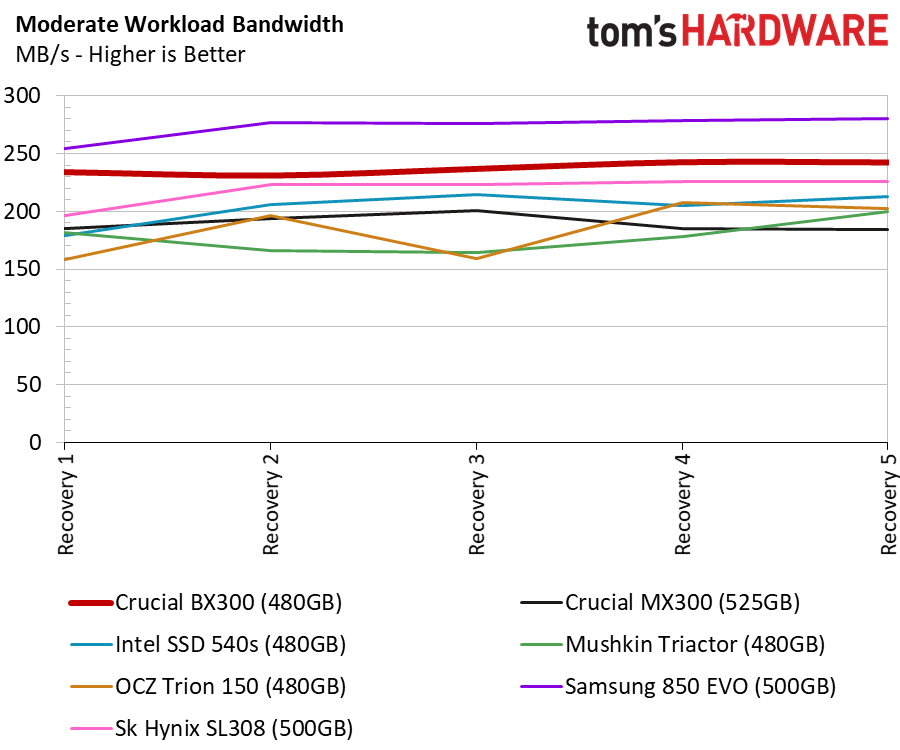
The BX300 features a very advanced cache system that allows the drive to perform well during heavy workloads. The BX300 480GB is in a class of its own during the heavy portion of the PCMark 8 Extended test. We introduce some idle time for recovery, but the BX300 doesn't recover to the same performance we recorded before the heavy workload. The drive likely just needs more time than the test allows. It does recover much better than many of the other SSDs, but it still lags the industry leader.
Total Service Time
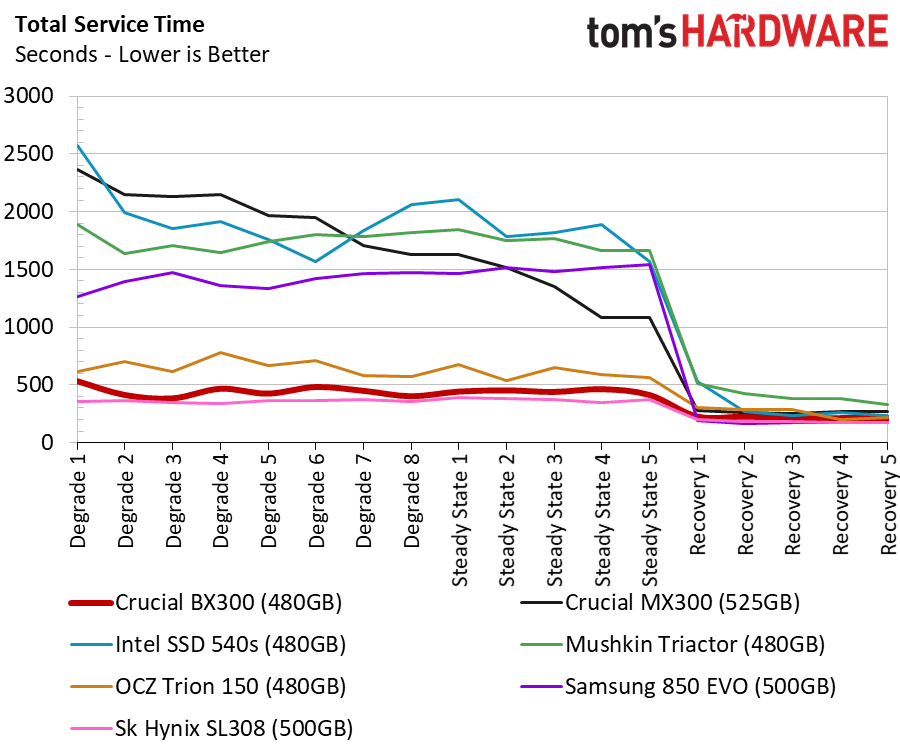
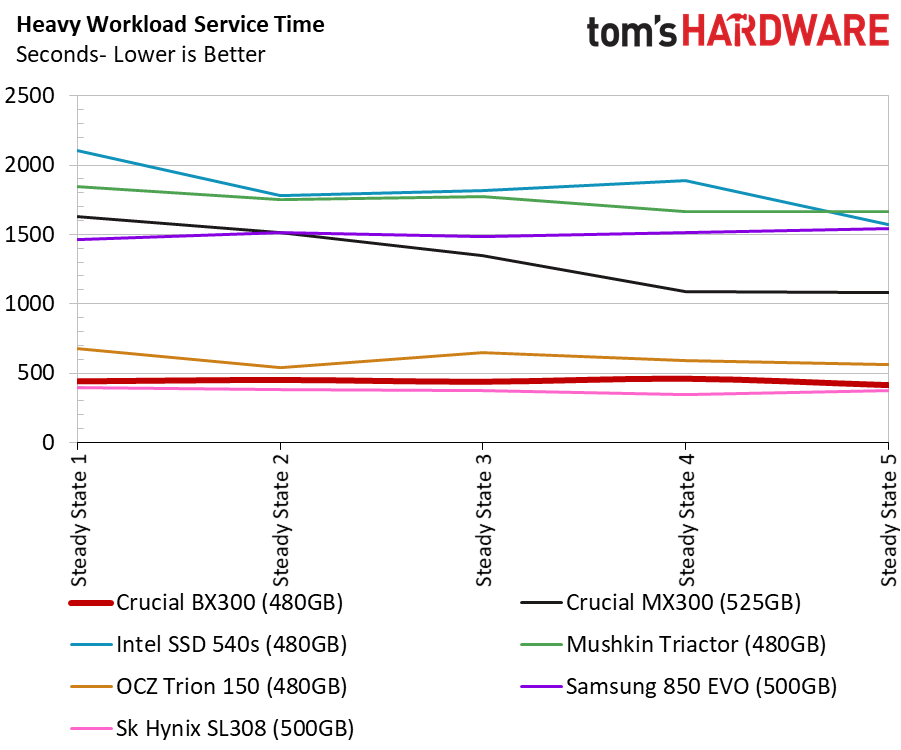
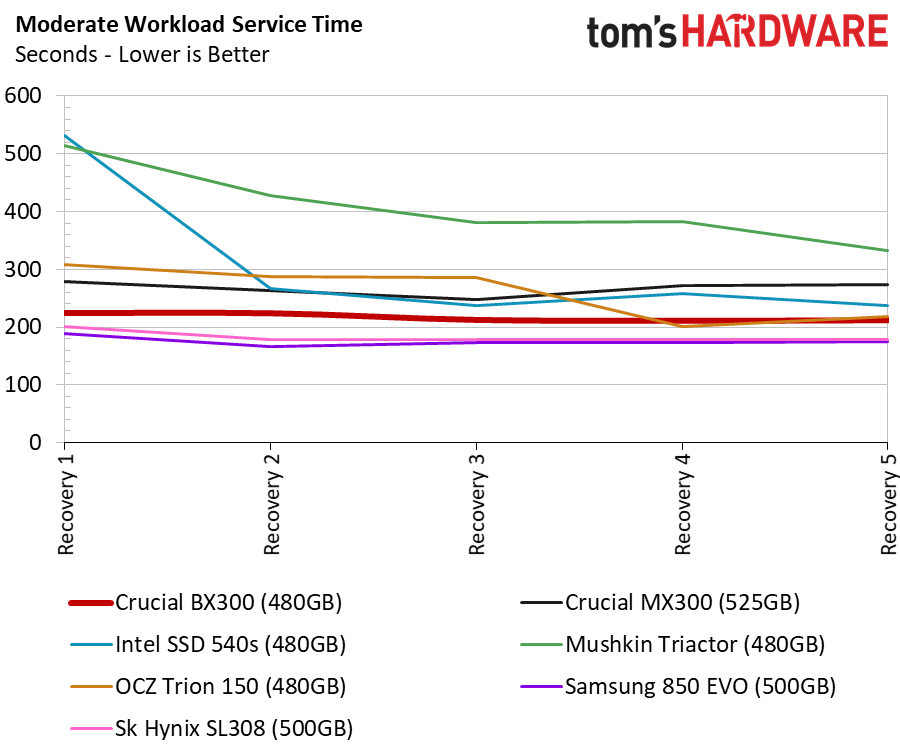
It’s surprising to see the BX300 480GB perform as well as it does. The SMI SM2258 controller has fewer cores than the 850 EVO and Micron's first-generation 3D NAND, even the MLC variant, hasn't impressed us.
Disk Busy Time
With that said, the BX300 480GB keeps pace with the Samsung in all of our performance tests. These two drives are nearly equal, and that's a big step forward for Crucial.
Responsiveness Test
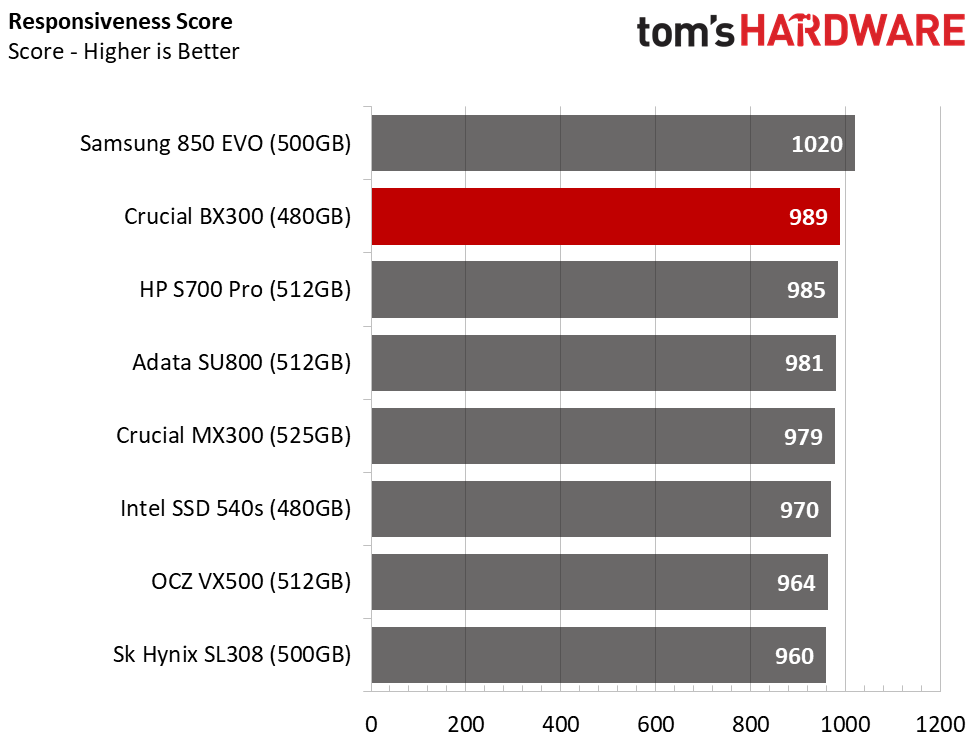
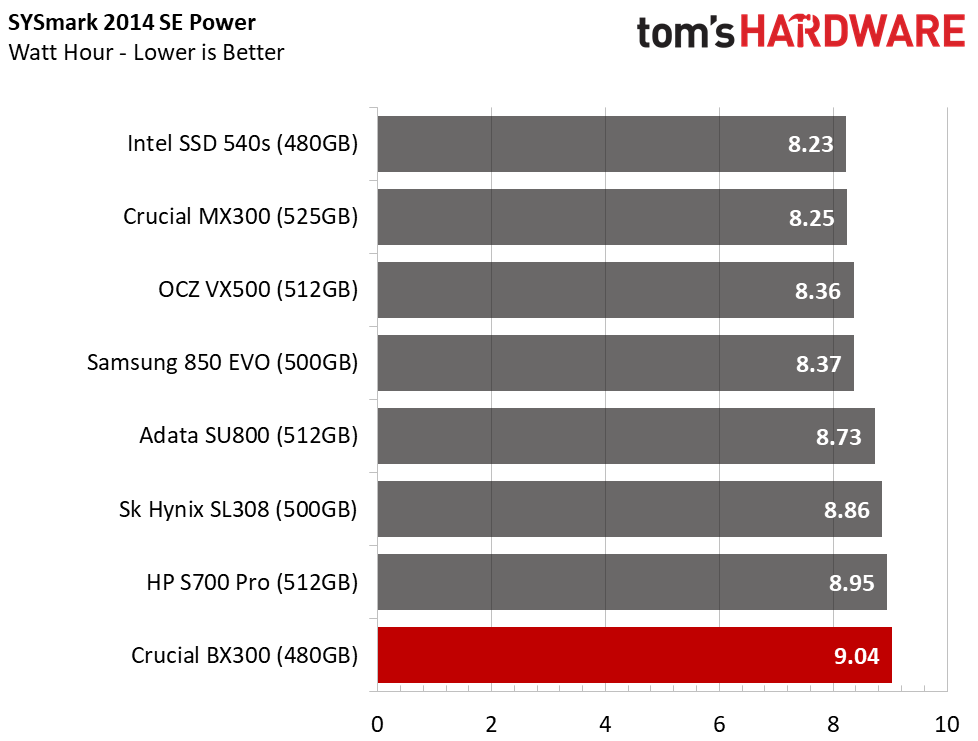
In this test, we move the drives from our flagship desktop to a Lenovo Y700-17 gaming notebook to experience performance in a more modest system. The BX300 480GB requires more power to stay within a few responsiveness points of the class leader.
Notebook Battery Life
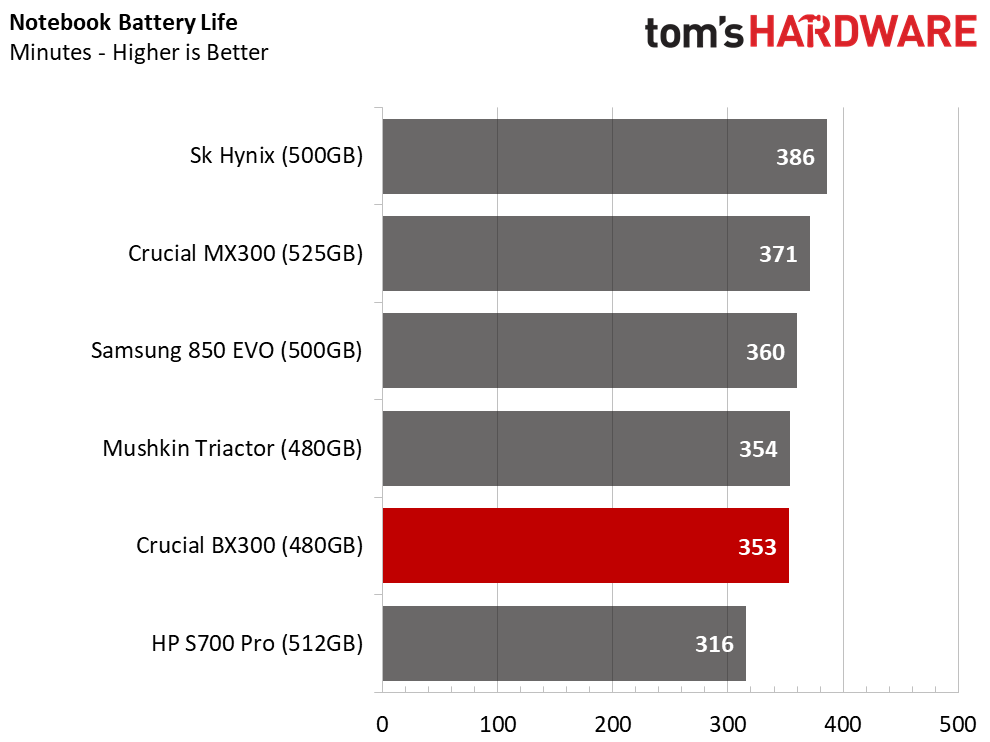
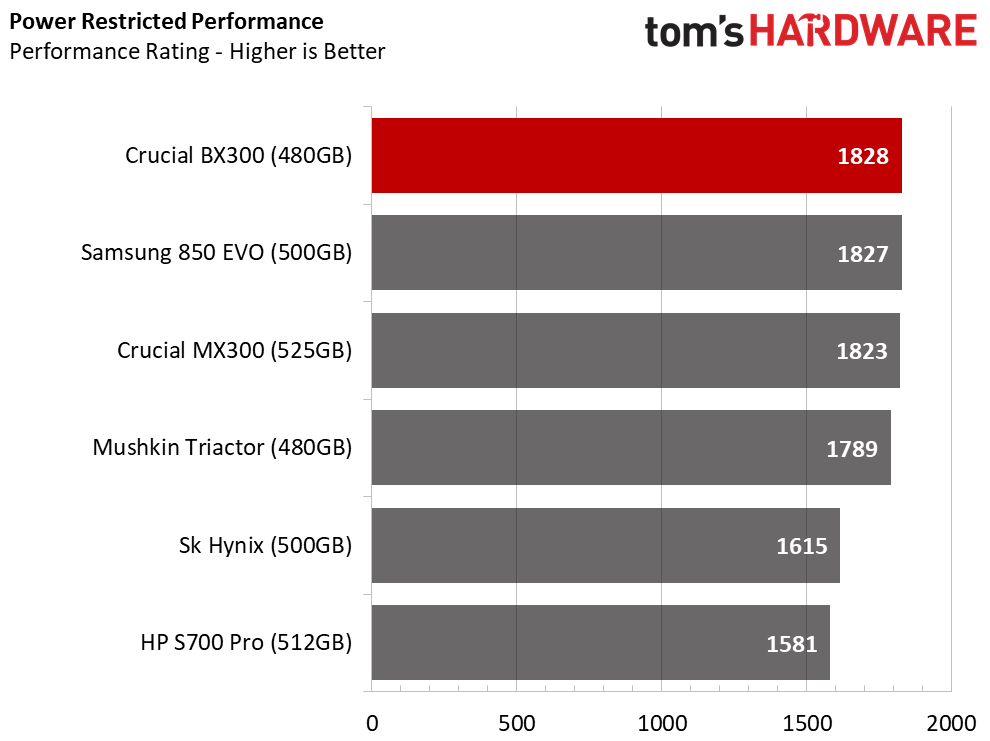
The extra power consumption leads to only a six-minute difference in our notebook battery life test. The Lenovo Y700-17 gaming notebook has less than five hours of battery life from the factory. We manage to give the system more life under battery power simply by changing the storage device.
MORE: Best SSDs
MORE: How We Test HDDs And SSDs
MORE: All SSD Content
Current page: 512GB Class SSD Performance
Prev Page Features & Specifications Next Page 256GB Class SSD Performance
Chris Ramseyer was a senior contributing editor for Tom's Hardware. He tested and reviewed consumer storage.
-
Rdslw Why they won't make HALF 2.5 drive ? A lot of SSD don't use this space at all and in laptops this means a lot of wasted space.Reply -
Snipergod87 Reply20116257 said:Why they won't make HALF 2.5 drive ? A lot of SSD don't use this space at all and in laptops this means a lot of wasted space.
There isn't an official standard as far as i know and anything with size constraints would get M.2 SSD's. That being said some OEM solutions use short length SATA SSD's but in a full length slot. -
mitch074 I'd love being able to directly compare these newer SSDs with older ones - I own a Crucial M500 480Gb, and I'd like to know how much better a replacement would be - not only in performance (enventhough mine is pretty much bottlenecked by the SATA port) but also in lifetime.Reply -
daglesj Dear Crucial, Just for Pete's sake bring back the BX100. It's really that simple. It was a great value and performing SATA SSD. Most people didn't need anything else. It just worked well.Reply -
garry.masters this report seems a bit out of alignment w other info regarding TLC MLC SLC I have read- it was my understanding that MLC offers more endurance and thus 'enterprise ssd' is usually MLC and that Samsung Pro is both faster and higher endurance due to MLC vs TLC NAND- so why is the endurance rating on this drive lower?. Also you seem to say this drive 'is taking a different path' from Samsung, but then say the Adata SU900 and XPG SX950 are essentially similar (is the 'different path' from THEM purely price?) Regardless- looks like a good product at a good price so will consider on my next purchase.Reply -
Nintendork MLC, Crucial, 3D?Reply
https://uploads.disquscdn.com/images/289a5318d82a512bfabf083eb76988bdd7e6b01394981a68706a27cb7a671926.jpg r? -
Nintendork GARRY.MASTERSReply
We can guess that with the example of the 850 pro, endurance ratings are just cosmetically reduced to not clash with enterprise class SSD's and affect sales.
And endurance test should not only be about filling/unfilling the SSD with 0-1's tools but tons of different archives with some of them remaining on the drive (40%) to test not only endurance but data retention for 1PB+ race. -
Rdslw Reply20116295 said:20116257 said:Why they won't make HALF 2.5 drive ? A lot of SSD don't use this space at all and in laptops this means a lot of wasted space.
There isn't an official standard as far as i know and anything with size constraints would get M.2 SSD's. That being said some OEM solutions use short length SATA SSD's but in a full length slot.
My laptop have m2 OR sata due to limited space. When I noticed those SSD's are smaller, I stripped the case and Guess what, there was space for both! :) sad that It took me ~6 months from buying to get to this idea. -
dark_lord69 Reply20116120 said:Crucial rethinks the transition to 3D TLC for all consumer SSDs and releases a brilliant entry-level product that takes aim at the dominant Samsung.
Crucial BX300 SSD Review : Read more
2.5" drives are standard for laptops.
M.2 drives are smaller
There are some smaller drives that SOME laptops used to use but today they are Obsolete.
1.8" 1.3" and 0.85" were smaller drives that are no longer used.
